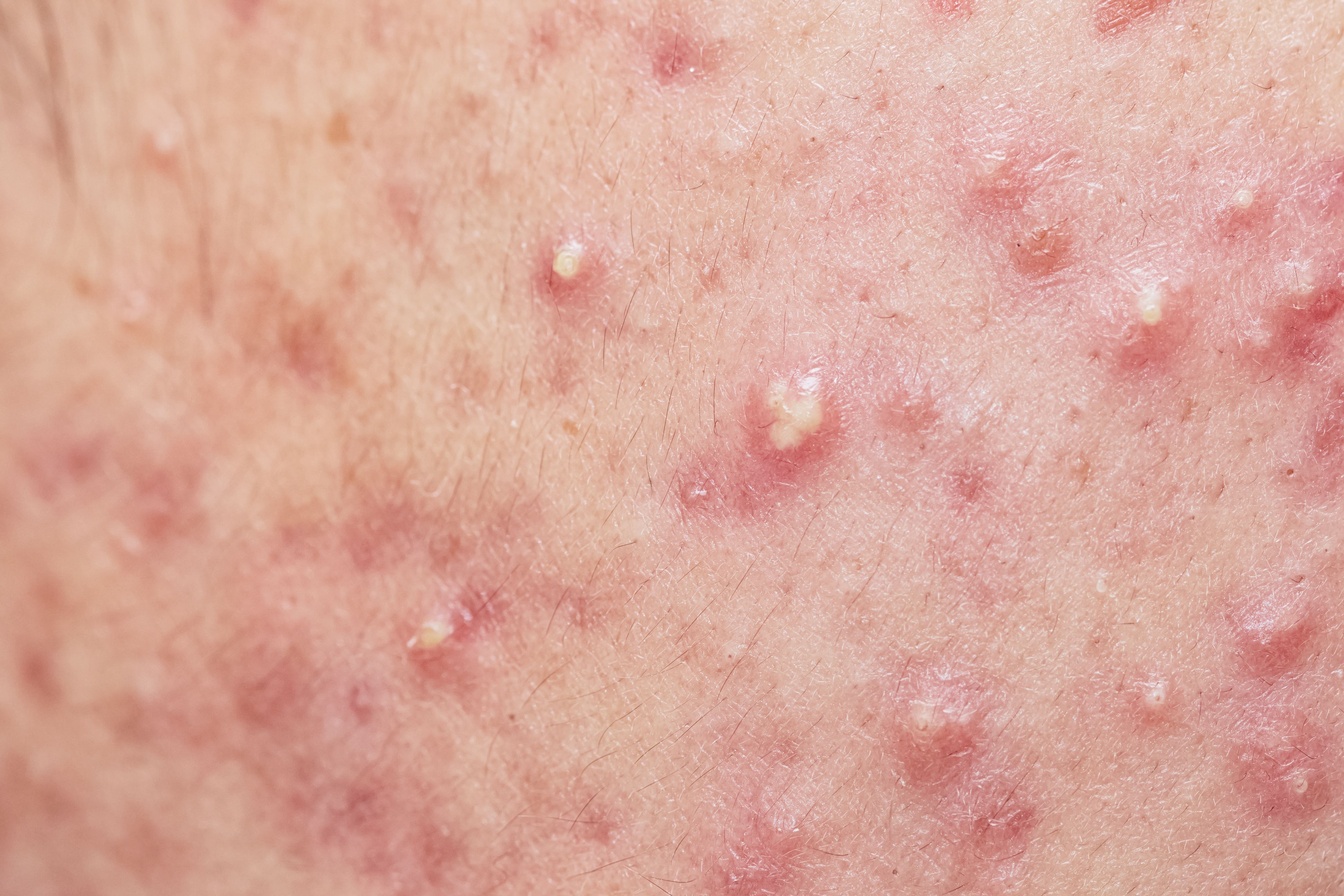- General Dermatology
- Eczema
- Alopecia
- Aesthetics
- Vitiligo
- COVID-19
- Actinic Keratosis
- Precision Medicine and Biologics
- Rare Disease
- Wound Care
- Rosacea
- Psoriasis
- Psoriatic Arthritis
- Atopic Dermatitis
- Melasma
- NP and PA
- Skin Cancer
- Hidradenitis Suppurativa
- Drug Watch
- Pigmentary Disorders
- Acne
- Pediatric Dermatology
- Practice Management
Seasonal Efficacy and Tolerability of Tazarotene in Warmer vs Colder Months
Researchers have explored whether the adverse effects of tazarotene are exacerbated during the colder winter months and whether there is variation in treatment efficacy and tolerability between cold vs warm seasons.
praisaeng/Adobe Stock

Topical tazarotene is a topical retinoid that is highly effective in the management of acne vulgaris. Several studies have cited its efficacy in reducing both noninflammatory and inflammatory lesions.1 However, its adverse effects may decrease treatment adherence in patients and interfere with treatment efficacy. These adverse effects include erythema, dryness, scaling, and skin sensitization that may overlap with winter-associated xerosis. Researchers have explored whether the adverse effects of tazarotene are exacerbated during the colder winter months and whether there is variation in treatment efficacy and tolerability between cold vs warm seasons.
According to Tan et al, the efficacy of tazarotene is unchanged during colder and warmer months.2 These findings are based on post hoc analyses of data pulled from phase 3, multicenter, double-blind, randomized, vehicle-controlled, parallel-group studies (NCT03168334, NCT03168321) of patients 9 years or older with moderate to severe acne. Tazarotene 0.045% lotion was evaluated against the vehicle for its efficacy in reducing inflammatory and noninflammatory lesions and cutaneous safety over 12 weeks. Researchers then stratified data into warmer (May-September) and colder (October-April) months. Regardless of the season, tazarotene demonstrated significantly greater least-squares mean absolute reductions in noninflammatory (colder/warmer tazarotene vs vehicle: –23.2/–22.6 vs –17.5/–15.1) and inflammatory (–16.6/–15.8 vs –13.2/–12.9) lesions compared with the vehicle.2
Moreover, the photostability and thus efficacy of tazarotene may be affected during warmer months due to greater sun exposure. However, researchers have found that there is no significant change in the concentration of tazarotene after exposure to UV-A or UV-B radiation.3 A study examining tazarotene efficacy in conjunction with psoralen plus UV-A therapy for the treatment of patients with psoriasis found that tazarotene degradation was unaffected by UV radiation exposure. Percent reductions in tazarotene concentrations were independent of the severity of psoriasis and not significantly different from the control. This further illustrated that seasonal fluctuations have minimal impact on tazarotene efficacy.
Seasonal variations in temperature and humidity are known to affect the skin’s barrier function. Low humidity and cold temperatures can decrease skin hydration, provoke a proinflammatory response, and increase the skin’s susceptibility to mechanical stress and contact irritation.3 Further, the decrease in UV radiation during winter months may negatively reduce skin barrier function: UV radiation has been shown to promote epidermal and stratum corneum thickness.4 This may be exacerbated by topical retinoid therapy, which has been shown to cause stratum corneum compaction.5 The skin is thus more susceptible to irritation and adverse effects from topical therapy during the winter months.
Based on findings by Tan et al, tazarotene treatment was discontinued at a slightly higher rate during the colder vs warmer months compared with the vehicle (3.4% vs 1.9%), likely explained by the higher reporting of adverse effects (12.0% vs 10.3%).2 Participants reported slightly increased pain, dryness, erythema, and exfoliation during colder months, likely secondary to increased susceptibility to irritation from low temperatures and humidity. Rates of burning, stinging, hyperpigmentation, and hypopigmentation were unchanged between seasons. Rates of scaling, erythema, and itching were slightly increased in the colder months vs warmer months from weeks 2 to 8; however, by week 12, these rates improved or returned to baseline.
Despite these adverse effects, topical retinols such as tazarotene continue to be the mainstay of acne treatment. Tazarotene has similar tolerability compared with adapalene and tretinoin but with greater efficacy in reducing acne lesions.6 Thus, the increase in adverse effects of tazarotene during colder months may be common to the retinoid family and not unique to tazarotene alone.
Overall, tazarotene is an effective year-round treatment option for acne vulgaris. However, it is important to note that seasonal changes in temperature and humidity can worsen adverse effects and thus treatment tolerability and adherence. To help patients combat increased irritation during the colder months, clinicians can suggest concurrent use of a moisturizer for dryness associated with tazarotene use. Other efforts to reduce treatment irritation have led to the development of a tazarotene 0.045% cream formulation, which utilizes polymeric emulsion technology to uniformly improve tissue permeation of the drug and enhance drug delivery.7 This new formulation is associated with fewer adverse effects compared with its predecessors and may be a suitable option for combating dryness and irritation during the winter.
Jenna Le is a third-year medical student at the Medical College of Wisconsin in Milwaukee.
Bernard Cohen, MD, is a professor of pediatrics and dermatology at Johns Hopkins University School of Medicine in Baltimore, Maryland.
References
- Shalita AR, Berson DS, Thiboutot DM, et al; Tazarotene Cream in Acne Clinical Study Investigator Group. Effects of tazarotene 0.1 % cream in the treatment of facial acne vulgaris: pooled results from two multicenter, double-blind, randomized, vehicle-controlled, parallel-group trials. Clin Ther. 2004;26(11):1865-1873. doi:10.1016/j.clinthera.2004.11.012
- Tan J, Draelos ZD, Gooderham MJ, et al. Influence of season on efficacy and tolerability of tazarotene 0.045% lotion for the treatment of acne. J Clin Aesthet Dermatol. 2023;16(9):42-45.
- Hecker D, Worsley J, Yueh G, Kuroda K, Lebwohl M. Interactions between tazarotene and ultraviolet light. J Am Acad Dermatol. 1999;41(6):927-930. doi:10.1016/ s0190-9622(99)70248-3
- Engebretsen KA, Johansen JD, Kezic S, Linneberg A, Thyssen JP. The effect of environmental humidity and temperature on skin barrier function and dermatitis. J Eur Acad Dermatol Venereol. 2016;30(2):223-249. doi:10.1111/jdv.13301
- Pearse AD, Gaskell SA, Marks R. Epidermal changes in human skin following irradiation with either UVB or UVA. J Invest Dermatol. 1987;88(1):83-87. doi:10.1111/1523-1747.ep12465094
- Fisher GJ, Esmann J, Griffiths CE, et al. Cellular, immunologic and biochemical characterization of topical retinoic acid-treated human skin. J Invest Dermatol. 1991;96(5):699-707. doi:10.1111/1523-1747.ep12470632
- Kakita L. Tazarotene versus tretinoin or adapalene in the treatment of acne vulgaris. J Am Acad Dermatol. 2000;43(suppl 2, pt 3):S51-S54. doi:10.1067/mjd.2000.108322

